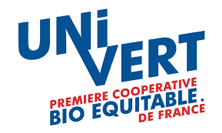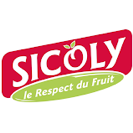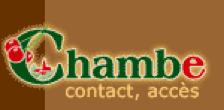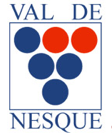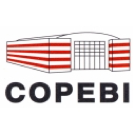Synthèse
In 2020, the global fresh cherry market, which saw sales of $3.99 billion, is forecast to have grown at an average annual rate of 5.5% to reach $5.22 billion in 2022, according to Transparency Market Research. Despite a difficult year, with production sales down by almost 30%, the French cherry market - valued at between between 208 and 243 million euros - continued to cope with strong seasonality and growing interest in organic and local produce.
Domestic consumption in major producing countries such as Turkey and Iran remained high, with most of their production consumed locally. Imports into France, notably from Turkey and Spain, amounted to some 6,700 tonnes, an increase of 72%, indicating a notable dependence on foreign cherries to meet demand. Demand for cherries has been driven by their health benefits and popularity across all demographics, with the organic market expected to capture 5.5% of household spending by 2020. The structure of the sector is characterized by a large number of small producers and cooperatives, with the main production concentrated in south-eastern France. The majority of French cherries are sold fresh (55%), the remainder being processed for various uses, and distribution is mainly via supermarkets (32%) and markets (31%).
While cherry price data shows a 6% increase in retail prices, the industry also faces a variety of sales challenges, including price volatility and competition with other fruits. Future regulations are aimed at ensuring fairer prices and strengthening the position of producers in negotiations with distributors...
Analysis of demand trends on the French cherry market
The French cherry market, which encompasses demand for cherry varieties ranging from the famous Bigarreau and Burlat to Morello and Amarelle, presents a nuanced landscape of consumer preferences and trends. The data shows that cherries, considered the third favorite fruit of the French population, enjoy an approximate consumption rate of 2.4 kg per household. In France, demand for cherries is multifaceted, with around a third of consumption attributed to the natural state of the fruit, and the remainder used as raw material for processed products.
In terms of market trends, there is a penchant for organic and locally sourced cherries, echoing a wider societal shift emphasizing health and sustainability. With around nine out of ten French people having consumed organic produce, and three quarters including it in their monthly diet, the market is forecasting support for organic cherry variants. In addition, young people's predilections suggest a preference for products described as "authentic" and "local", suggesting growth potential for nationally branded cherries. Despite cherry preferences, the fruit faces significant competition from other seasonal substitutes. Cherries represent a meagre 1% of the total fruit market in France, which is dominated by apples, bananas and stone fruits such as peaches and nectarines. The highly seasonal nature of demand for cherries, mainly concentrated in the summer months, further intensifies this phenomenon.
Despite an increase in imports, perhaps due in part to the lifting of bans on Turkish cherries, local production is struggling to keep pace with demand, necessitating imports from countries such as Turkey and Spain. The gap between production and exports in these countries highlights the importance of domestic consumption.
To sum up, the French cherry market is going through a period of transition, in which consumer preference for organic products is increasing.rence for organic and regional products collides with the realities of import dependency and production challenges. This juxtaposition, combined with the competitive threat of substitute fruits, defines the current state of demand on the French cherry market
Cherry producers and traders
- SCA Covial: SCA Covial is a major player in the cherry industry, dedicated to providing high-quality cherries from cooperative efforts. Their approach combines the expertise of individual growers to produce cherries that meet rigorous quality standards.
- Sicoly: Sicoly is a cooperative that prides itself on supplying a diverse range of fruits, including cherries, from its member growers. It is committed to sustainable practices and to providing products that are both delicious and responsibly grown.
- AMS European: AMS European is a key distributor in the cherry market. It imports and exports cherries, as well as other fruits, ensuring that different markets have access to a constant supply of fresh produce.
- Agri Fruits Chamber: Agri Fruits Chamber operates at the heart of the agricultural industry, focusing on the cultivation and distribution of cherries and other fruits. Its concern for quality is evident in its handling and distribution processes.
- Val de Nesque: Val de Nesque is a well-known cherry-growing entity, operating with a commitment to exploiting the advantages of the local soil to produce cherries rich in flavor and quality.
- Montagnes de Venasque: Harvesting from the rich soils of the Venasque mountains, this entity markets cherries that are not only remarkable for their taste, but also for the unique geographical qualities they inherit from their growing environment.
- Straw hat collections: Known for their traditional approach, Straw hat collections emphasize a more artisanal and environmentally friendly method of cherry production, appealing to a niche audience who appreciate cherries with a distinct heritage.
- COPEBI: COPEBI is a cooperative that combines agricultural know-how and market knowledge to supply cherries that satisfy both local and wider markets. Its cooperative model ensures that member farmers benefit from shared resources and knowledge.
- Domaine le Monestier: As an artisanal producer, Domaine le Monestier offers cherries that demonstrate its commitment to refined cultivation practices and its attention to consumer demands for superior quality products.
- International Plant Selection: At the forefront of agricultural innovation, International Plant Selection is dedicated to the creation and propagation of new cherry varieties. They play a crucial role in market expansion, with new flavors and characteristics designed to appeal to consumers.
- Les Vergers de Champlain: Located in a region ideally suited to cherry growing, Vergers de Champlain produces a full range of fruits, including cherries.
à la compréhension de ce marché
Détail du contenu
 Informations
Informations
- Nombre de pages : 30 pages
- Format : Version digitale et PDF
- Dernière mise à jour : 18/07/2022
 Sommaire et extraits
Sommaire et extraits
1 Market overview
1.1 Definition
The cherry is the edible fruit of the cherry tree. It's a fleshy fruit with a stone, ranging in color from light red to black. There are over 600 varieties of cherry in France, the best known being the Bigarreau or Burlat.
Cherries can be eaten on their own, or processed by local producers or industrialists for use in a variety of food products: syrups, sauces, brandies, jams, pastries, whole-fruit yoghurts, fruit salads...
The cherry market is essentially a B2C market. All types of supermarkets are represented, with supermarkets leading the way, as well as the producers themselves. Farmers are increasingly turning to organic produce, with agriculture.gouv recording a doubling of the organic surface area cultivated in France in 2020, representing 9.5% of cultivated land. However, consumption of organic produce has suffered a blow in recent weeks and months, in the wake of the health crisis and galloping inflation, registering a decline of -1.34% in 2021 for the first time in a decade, according to AgenceBio. The clash between supply and demand for organic products is sure to change the face of many agricultural markets, including the cherry market.
Global cherry production has been rising steadily for the past ten years, from 3 million tonnes in 2010/2011 to 4 million tonnes in 2021/2022. This market is set to continue growing in the face of ever-increasing demand from emerging countries, especially China, the world's leading importer of cherries. Its production leader is Turkey, and its main exporter Chile. France seems to be recovering from the low production of 2021 due to frost waves, and in 2022 should return to its 2020 production level (around 35,000 tonnes).
Cherries are part of the wider fruit market in France, so in order to give a global view of the sector and to better understand the place of cherries in French fruit production, data including the fruit market in France will sometimes be used.
1.2 Key figures for the global market
According to Stratistics MRC, the global fresh cherry market is worth $**.** billion in **** and is expected to reach $***.** billion by ****. Some of the key factors propelling market growth are the increasing use of cherries in ice creams, jellies, salads, dairy drinks and alcoholic beverages around the world. Rising disposable incomes, population ...
1.3 Key figures for the domestic market
The French cherry market is set for a full recovery in ****, after a difficult year in **** due to frost waves that hampered production and led to a one-third drop in sales compared to the average between **** and **** (***). With an average retail price of €*.**/kg, this gives a price of €*,***.**/t. Knowing ...
1.4 Foreign trade in French cherries
Like French cherry production is not the most developed in the world, nor in the European Union. This graph is more than explicit. France's external balance on the cherry market is consistently negative between **** and ****, with a coverage rate averaging **.**% over the same period.
Foreign trade in cherries France, ****-**** Finances.gouv. The ...
2 Demand analysis
2.1 Demand and its determinants
Cherries, a companion product
According to a Top Santé magazine ranking carried out in January ****, cherries were France's *th favorite fruit. Women and the elderly respond particularly positively to this type of product(***).
Demand for fresh cherries in France averages ***g per person per year(***). In all cases, the cherry market ...
2.2 Demand cyclicality
Consumption of raw cherries is highly seasonal, occurring mainly in summer. Cherry consumption by French households is concentrated over a *-month period (***), which accounts for the overwhelming majority of volumes purchased. This is essentially due to the fact that cherry production is concentrated during this period, which has the effect of ...
2.3 Demand trends
The demand for this fruit can be explained by its gustatory and nutritional qualities. Cherries are a good source of energy, and contain antioxidants and active agents that can help prevent type * diabetes and other diseases (***) and regulate the digestive system.
Cherries are a seasonal fruit that can be substituted for ...
3 Market structure
3.1 Industry forces and organization
Producers
The market for cherry growers is fragmented into smallholders. Many growers operate family estates. Some growers are grouped together in agricultural cooperatives. Barriers to entry are low, which explains the sector's high level of competition.
There are a large number of cherry growers seeking to expand geographically and by offering ...
3.2 Industrial use of cherries
As mentioned above, **% of French cherry production is destined for industrial processing. However, data is only available for Bigarreau cherries, which are the most widely used for processing. Cherry processing is mainly focused on candied cherries, cherries in syrup and cakes. The Bigareau cherry industry in France is responsible for *** direct ...
4 Offer analysis
4.1 Products
The different varietiesCoteaux du Ventoux cherry Protected Geographical Indication (***)This cherry variety is unique in that it benefits from a European distinction, the PGI, because it belongs to the Coteaux du Ventoux region. Produced by ** growers on Mont Ventoux in Provence-Alpes Côte-d'Azur, it is harvested exclusively by hand.
Bigarreau
This ...
4.2 Production costs
The main production costs for cherries are harvesting, irrigation and pruning. In recent years, many growers have invested in mechanized fruit processing (***) and packaging. The biggest cost, however, remains labor. Picking is generally done by hand at a rate of **kg/hour, followed by sorting, which is estimated at €*/kg, so ...
4.3 Sales prices
The following product prices are wholesale prices (***).
On average, Belgian cherries are the least expensive. However, these are only found on the Lyon-Corbas market. The cheapest cherry per kg is sold at €*.**/kg ex-VAT, and is also found on the Lyon-Corbas market. The most expensive cherry is, unsurprisingly, organically grown. It ...
4.4 Cherry price trends
cherry price trend in € incl. VAT/kg France, ****-**** FranceAgrimer
In view of this graph,prices for **** are very slightly below the five-year average prior to ****. We can also see that climatic risks are not to be taken lightly; they have generated an increase of around **% in cherry prices in **** . These ...
5 Regulations
5.1 List of current regulations
The Clause de Sauvegarde de l'Agriculture set up by the Ministry of Agriculture in ****, renewed in ****, protects French producers against distortions of competition and safeguards consumers against the risk of dimethoate residues. This clause prohibits the import of cherries from countries where dimethoate is authorized.(***)
The EGALIM * law (***)
The French Rural ...
5.2 Upcoming regulations
On May **, ****, European regulations reduced the maximum residue limits for dimethoate in cherries to zero. This new regulation is due to come into force on December **, ****. This poses many problems for farmers who fear a devastating fly that has recently arrived in Europe: the Drosophila suzukii fly.A new law was ...
5.3 Existing labels can help guide consumer choices
Label Rouge: The Label Rouge is a national label designating products which, due to their production or manufacturing conditions, have a higher level of qualityÌ than other similar products usually marketed.
Appellation d'Origine Protégée (***): the product says where it comes from: its name is that of a place emblematic ...
6 Positioning the players
6.1 Segmentation
Growers and market gardeners :
SCA Covial Sicoly AMS European Chambe Agri Fruits Val de Nesque Monts de Venasque Cueillettes des chapeaux de paille COPEBI Domaine le Monestier International Plant Selection Les Vergers de Champlain
Products and services related to the cherry industry :
Maf Roda Fachaux et fils
- Covial Uni Vert
- Sicoly
- AMS European
- Chambe Agri Fruits
- Val de Nesque
- Monts de Venasque
- Cueillettes des chapeaux de paille
- COPEBI
- Domaine le Monestier
- International Plant Selection
- Les Vergers de Champlain
- MAF Roda (Agrorobotic Groupe)
- Fachaux et Fils
 Liste des graphiques
Liste des graphiques
- Principaux pays exportateurs
- Principaux importateurs de cerises
- Marché de la cerise
- Indice moyen de volume d'achat des ménages selon l'âge de l'acheteur
- Indice moyen de volume d'achat des ménages selon la région
Toutes nos études sont disponible en ligne et en PDF
Nous vous proposons de consulter un exemple de notre travail d'étude sur un autre marché !
Dernières actualités
Entreprises citées dans cette étude
Cette étude contient un panorama complet des entreprises du marché avec les derniers chiffres et actualités de chaque entreprise :
 Choisir cette étude c'est :
Choisir cette étude c'est :
Accéder à plus de 35 heures de travail
Nos études sont le résultat de plus de 35 heures de recherches et d'analyses. Utiliser nos études vous permet de consacrer plus de temps et de valeur ajoutée à vos projets.
Profiter de 6 années d'expérience et de plus de 1500 études sectorielles déjà produites
Notre expertise nous permet de produire des études complètes dans tous les secteurs, y compris des marchés de niche ou naissants.
Notre savoir-faire et notre méthodologie nous permet de produire des études avec un rapport qualité-prix unique
Accéder à plusieurs milliers d'articles et données payantes
Businesscoot a accès à l'ensemble de la presse économique payante ainsi qu'à des bases de données exclusives pour réaliser ses études de marché (+ 30 000 articles et sources privées).
Afin d'enrichir nos études, nos analystes utilisent également des indicateurs web (semrush, trends…) pour identifier les tendances sur un marché et les stratégies des entreprises. (Consulter nos sources payantes)
Un accompagnement garanti après votre achat
Une équipe dédiée au service après-vente, pour vous garantir un niveau de satisfaction élevé. (+33) 9 70 46 55 00
Un format digital pensé pour nos utilisateurs
Vous accédez à un PDF mais aussi à une version digitale pensée pour nos clients. Cette version vous permet d’accéder aux sources, aux données au format Excel et aux graphiques. Le contenu de l'étude peut ainsi être facilement récupéré et adapté pour vos supports.
 Nos offres :
Nos offres :
the cherry market | France
- Quels sont les chiffres sur la taille et la croissance du marché ?
- Quels leviers tirent la croissance du marché et leur évolution ?
- Quel est le positionnement des entreprises sur la chaine de valeur ?
- Comment se différencient les entreprises du marché ?
- Données issues de plusieurs dizaines de bases de données
Pack 5 études (-15%) France
- 5 études au prix de 75,6€HT par étude à choisir parmi nos 800 titres sur le catalogue France pendant 12 mois
- Conservez -15% sur les études supplémentaires achetées
- Choisissez le remboursement des crédits non consommés au terme des 12 mois (durée du pack)
Consultez les conditions du pack et de remboursement des crédits non consommés.





 Stations fruitières : Maf Roda s'agrandit avec Caustier - 27/12/2023
Stations fruitières : Maf Roda s'agrandit avec Caustier - 27/12/2023
